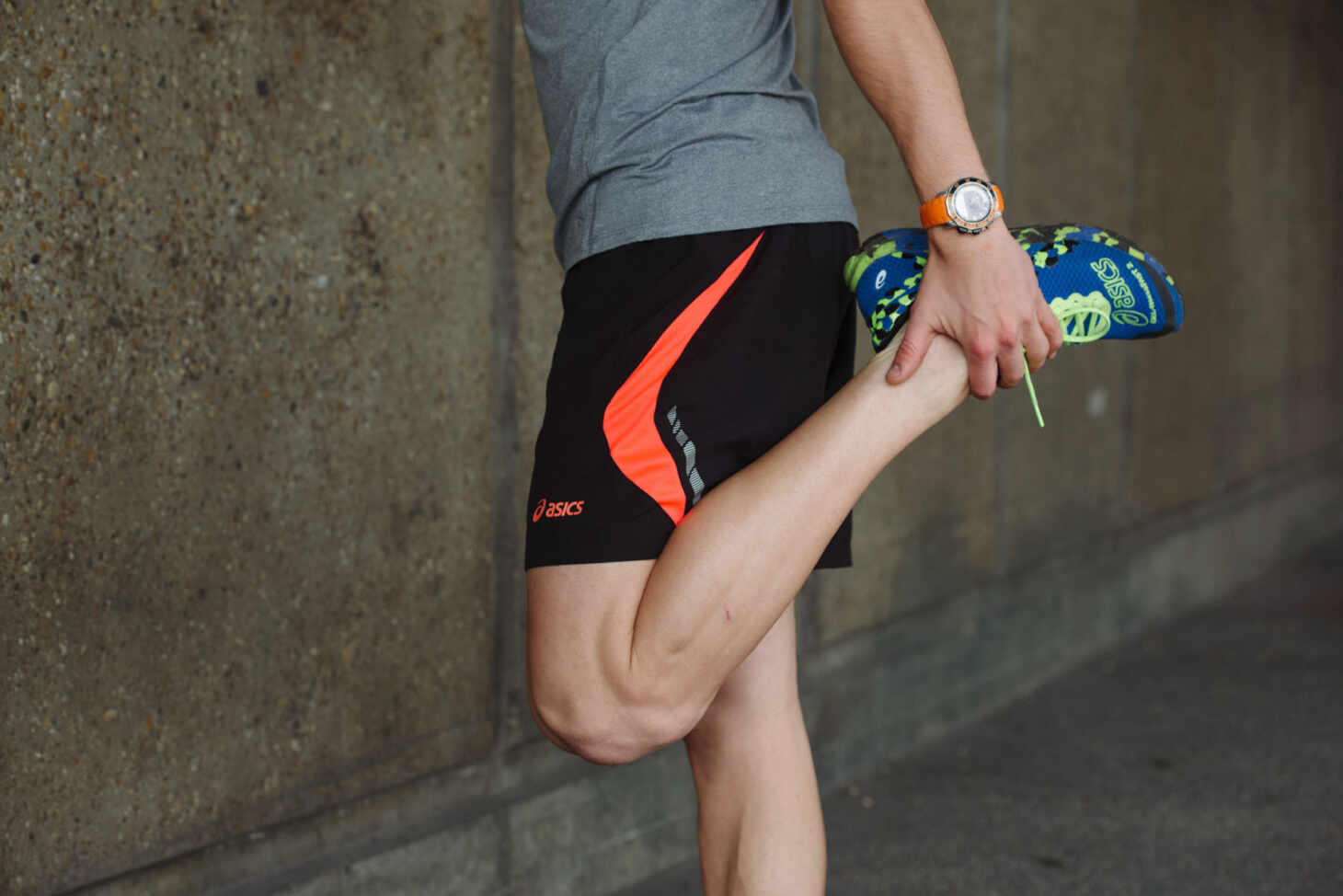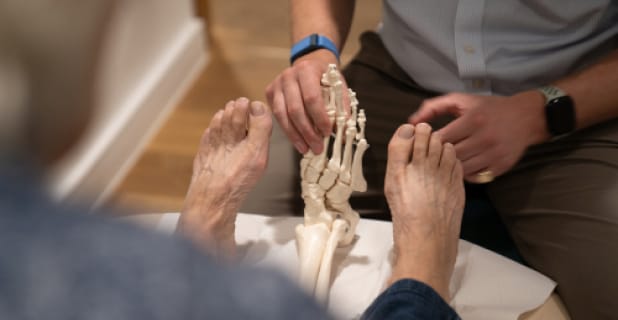Recovering from Running Injuries: Expert Tips & Treatment

Claire Small
Chief Clinical Officer & Consultant Physiotherapist
- 22 November, 2019
- Running
- 6 min read
Recovering from Running Injuries: Expert Tips & Treatment

Running is a hobby that is becoming increasingly popular, especially here in London. More and more people are eager to improve their physical and mental well-being, and because running is such an accessible form of exercise, with minimal financial input, it’s easy to see why so many are getting involved.
However, both elite and recreational runners are susceptible to injuries. So we collected the following list to highlight some of the most common running injuries people sustain, the reasons why, and what to do to get passed them and back to running, pain-free.
Common Running Injuries
- Runner’s Knee (patellofemoral pain syndrome)
- Achilles tendinitis/tendinopathy
- Hip pain (gluteal tendinopathy)
- Heel pain (plantar fasciitis)
- Pain outside of the knee/thigh (Iliotibial band syndrome)
- Shin splints or stress fractures (bone stress Injuries)
- Muscle strains
There are a range reasons why someone could sustain one of these injuries. From the latest evidence, we are aware of certain causes that may increase the risk of these injuries and as clinicians, it is our job to try and understand these reasons to enable us to get runners back on their feet as soon as possible.

What are the potential causes of running injuries?
1. Training Error
Many running injuries are thought to be as a result of ‘training error’, due to either a sudden increase in distance, speed or intensity of running, or returning to a previous running distance after a long break.
Our body comprises of tissues that are very good at adapting to increasing loads. However, if we overloaded them as ask them to do too much too quickly, this is when we put ourselves at a higher chance of getting injured.
These kind of injuries can be avoided easily by periodising your training and increasing either your distance or speed in a structured way, week by week, so your muscles and tissues are strong enough to adapt to each increase as you go.
2. Muscular Weakness, or Load Tolerance
Tolerance is defined as “the capacity to endure continued subjection to something such as a drug or environmental conditions without adverse reaction”.
Our bodies’ tissues, whether bones, muscles, tendons or ligaments can withstand a certain weight or demand in movement, and if we overload these when they aren’t strong enough yet, or without allowing enough time for them to rest and recover, and ultimately adapt and become stronger to then be able to withstand more weight, then we again put ourselves at risk of becoming injured.
As runners, our body needs to be able to endure the continued extra forces put through it when we run, so if there are any weaknesses in the hips, knees, or ankles, this can make you more susceptible to injury.

3. Gait Mechanics
A person’s ‘gait’ is the movement that your leg travels through during each step. Your gait is very unique to you and is be the foundation of your running technique.
Sometimes, if you feel pain or aches in your hip or back, the culprit can actually be much lower down in the foot or ankle. As we know, everything is connected and often a Podiatrist can highlight a mechanical issue or imbalance in the foot or ankle that is causing the issue in the hip, back or higher.
Clinical studies show that there isn’t any one ‘style’ of running that causes pain, perse, but it has been found that there are some running styles can put different bodily structures under more load than others, which could cause pain or injury in those weaker areas.
To find out if it is your mechanics, or indeed anything else, that are causing your pain, it’s best to have a detailed running assessment with an expert Physiotherapist.
4. Flexibility
Flexibility is an interesting one, because there are certainly runners reading this right now, thinking ‘I am the least flexible person’. But there is evidence to suggest that restrictions at certain joints can affect other joints and muscles of the leg – the kinetic chain – putting stress on other tissues.
For example, stiffness in the ankle has been linked with heel pain, otherwise known as plantar fasciitis, one of the common injuries listed above.
A lack of flexibility – potentially caused by a previous or unaddressed injury – could create a difference in tissue or muscle length on one side of the body, that is ultimately causing your pain, or affecting your performance and ability to run.
Alternatively, sometimes having too much functional range in certain joints during running can also increase the stress certain tissues are put under.
A great way to increase your range of motion and increase strength is through Pilates, which is an exercise method that focuses on quality of movement with an emphasis on length, breath and working from the ‘core’.
Of course, this is not an exhaustive list of why people experience running related injuries. Pain is very complex and could be a result of several other physical and psychological factors. To learn more about pain, and why and how we feel pain, watch our video: The Many Misconceptions of Pain.
To be sure about the cause of your pain or injury it is always best to speak to a healthcare professional who can provide a full and detailed assessment in order to get you on the right path to recovery.

What should a running assessment include?
1. Subjective Assessment
Firstly, a subjective history should be taken. This would typically include some of the following questions:
- How often do you run?
- How long have you been a runner?
- What pace do you run at?
- What type of footwear do you run in?
- Have you had any previous injuries?
- Where is your pain and at what point during your run does it hurt?
- Do you participate in any other active activities?
Questions like these help towards building a picture of why someone may be experiencing pain.
As we mentioned, there can be several causes for someone’s pain, so a detailed history is an essential part of the assessment process, as it will help to create an appropriate treatment plan.
2. Objective Assessment
This part of the assessment takes in to account your ‘physical data’. These test include:
- Muscular, impact and control testing
The muscle groups in the leg, ankle and feet need to be put under a series of tests in order to screen for any weaknesses. For example, there could be a weaknesses specifically on one side of the body, or on both sides, or there might be an inability to control certain movements at all. All this information would prove which muscle group, (or groups) is showing signs of weakness.
- Joint range of motion/flexibility
All lower limb joints also need to be assessed to check for any joint or soft tissue restrictions you may have. Generally, the joints that are most relevant are the hips, knees and ankles.
Similar to muscle strength, an imbalance or a restriction in your joints’ range of movement could be something that needs to be addressed in your treatment.
A gait analysis is an assessment or evaluation of the way you stand and walk, and in order to get an accurate gait analysis you need to see a trained expert such as a Podiatrist.
They will analyse you by looking at the way we move, also known as your kinematics, by filming you walking to identify any potential weaknesses or movement mechanics that are contributing to your injury.
These may include how your foot strikes the floor and the pattern of your strike, the function of your feet, hips and pelvis as you walk, and the steps you take per minute (cadence).
An example of a reason common runner’s injury ‘shin splints’, could be something called ‘over striding’, where a person’s foot strides to far out in front of the knee, as it can irritate the knee joint and surrounding muscles.
However, this doesn’t necessarily mean it’s the cause of the pain; some elite athletes have these traits but run without pain.
Therefore, a runner’s gait might not necessarily be the cause, but what we do know is that different running styles will put more weight through certain joints during the repetitive movement.
Once you know the area that is causing the pain or discomfort, you can then work to adjust your running style in the most appropriate way, through guided treatment whereby you might benefit from ‘offloading’ the problem area by adapting your running gait, or way of running.
Once you’ve had an initial assessment, treatment will usually consist of a mobility and flexibility program, a strength program and running cues. This will be independent to you, your injury, movements, gait, shoes, goals, and many more important factors that are completely individual to you.
So there you have it, there are unfortunately many ways runners can get injured, and we understand that not knowing what to do can be both worrying and frustrating. But the good news is, there is something you can do – now or if you experience pain or injury that has been caused by running – and that is speak to an expert Physiotherapist and get a running assessment.
The main message we’d like you to takeaway from this article is that it is so important to get to the root of the problem with a correct diagnosis so that your individualised treatment plan can be developed to treat your issue correctly.

Advice
Over the last 20+ years our experts have helped more than 100,000 patients, but we don’t stop there. We also like to share our knowledge and insight to help people lead healthier lives, and here you will find our extensive library of advice on a variety of topics to help you do the same.
OUR ADVICE HUBS See all Advice Hubs

